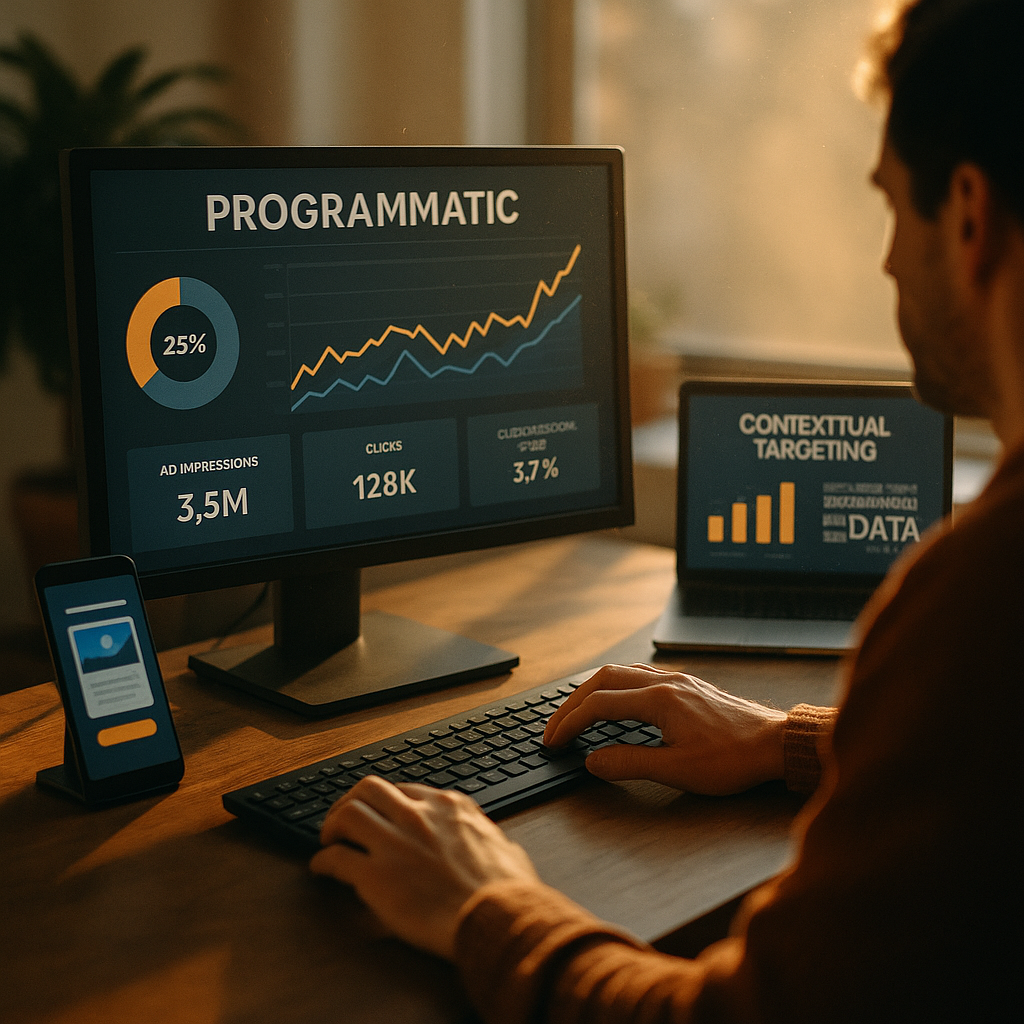As digital marketing evolves in 2025, brands are seeking smarter ways to reach audiences. The future of digital advertising hinges on programmatic and contextual targeting to drive relevance and efficiency. In this article, discover the latest strategies behind these technologies and how they continue shaping successful campaigns.
Programmatic Advertising: Revolutionizing Real-Time Bidding
Programmatic advertising uses automated systems and artificial intelligence to buy and place ads in real time, maximizing each impression’s value. By analyzing vast amounts of audience data, advertisers can deliver personalized messages across multiple devices and channels, from mobile apps to connected TVs. According to the IAB, nearly 95% of digital display ads are now served programmatically in 2025, underscoring this method’s immense dominance.
Programmatic buying reduces manual labor and human error in campaign management. Platforms like demand-side platforms (DSPs) enable marketers to optimize bids, targeting, and creative delivery based on performance results. This agility ensures budgets are allocated efficiently, boosting ROI for advertisers. In an increasingly fragmented media landscape, such automation is vital for staying competitive.
Contextual Advertising: Privacy-Friendly Targeting
As regulators and browsers clamp down on third-party cookies, contextual targeting is experiencing a resurgence. Unlike behavioral targeting, contextual advertising places ads based on the content of the page, not user data. This approach aligns ads with site topics, keywords, and sentiment, increasing relevance without compromising privacy.
Advanced natural language processing (NLP) and semantic analysis have made contextual targeting incredibly sophisticated in 2025. Brands can now align their messages with contextually appropriate moments, improving user experience. For example, an eco-friendly product may appear on sustainability blogs, while sports-related brands are promoted during live match coverage. This strategy fosters trust, as consumers demand more transparent data practices.
Artificial Intelligence: Powering Precision in Ad Targeting
Artificial intelligence is the backbone of both programmatic and contextual targeting. Machine learning algorithms analyze user interactions, content patterns, and campaign performance at lightning speed. This enables in-depth audience segmentation and real-time optimization—resulting in higher engagement and conversion rates.
AI-powered creative can dynamically adjust messaging, format, and even design based on the context and audience profile. For instance, a travel brand’s ad might highlight winter getaways to users browsing ski holiday guides, while featuring beach destinations to users exploring summer activities. This capability ensures brands meet audiences in the right place at the right time with the right message.
The Privacy-First Shift: Future-Proofing Advertising Strategies
With increasing scrutiny on consumer data privacy, advertisers must prioritize trust and transparency. Legislation such as the GDPR, CCPA, and other global frameworks require marketers to seek explicit consent for data collection and use. As a result, reliance on third-party data is waning in 2025, giving rise to strategies that use first-party data and contextual insights.
Brands are embracing privacy-centric programmatic solutions by adopting server-side tracking, contextual signals, and cohort-based approaches. Publishers, too, are investing in first-party data solutions, like subscriptions and loyalty programs, to offer high-value segments to advertisers without violating user trust. This approach not only ensures compliance but also builds long-term relationships with audiences.
Measuring Success: Attribution and Optimization in Digital Advertising
Accurately measuring digital advertising performance is crucial for optimization and accountability. With the decline of cookies and device identifiers, marketers are leveraging advanced attribution models that blend probabilistic and deterministic data. Multi-touch attribution, incrementality testing, and machine-learning-based analytics are transforming how success is measured in 2025.
Dynamic reporting dashboards help advertisers monitor campaign metrics in real time, adjusting spend and creative based on what works. Brands increasingly focus on metrics like attention and engagement (dwell time, scroll depth) over mere clicks or impressions. These insights empower smarter spending and ultimately drive better business outcomes.
Adapting to the Future: Integration, Creativity, and Customer Experience
Ultimately, success in the future of digital advertising relies on integrating programmatic and contextual targeting with creative excellence. Seamless collaboration between data scientists, creatives, and strategists ensures ads are both relevant and memorable. Modern ad technology platforms offer self-service and managed options, so even smaller brands can compete with major players.
Customer experience remains central. Advertisers who prioritize user needs—through non-intrusive formats, transparent messaging, and high-quality content—derive greater loyalty and performance. In 2025, the best campaigns are those that combine automation with a human touch, making every interaction meaningful and trustworthy.
In summary, programmatic and contextual targeting have redefined digital advertising in 2025—delivering privacy-friendly, relevant, and efficient campaigns. Embracing these technologies and keeping user trust at the core ensures brands stay future-ready and competitive.
Frequently Asked Questions
-
What is programmatic advertising?
Programmatic advertising is the automated buying and selling of digital ad inventory using real-time data and AI. It enables precise audience targeting, efficient campaign management, and optimization across multiple channels.
-
How does contextual advertising differ from behavioral targeting?
Contextual advertising places ads based on the content of a web page, rather than tracking users’ browsing behavior. This method respects privacy by not relying on third-party cookies or personal data, aligning ads to relevant topics and sentiments.
-
Why is privacy important in digital advertising in 2025?
Strict regulations and changing consumer expectations demand transparency from brands. Privacy-first advertising builds trust, protects users’ rights, and helps businesses avoid legal risks—crucial for sustainable digital marketing strategies.
-
How can brands measure the success of their digital ad campaigns?
Brands use advanced attribution models, including multi-touch approaches and AI-driven analytics, to assess performance. Key metrics include attention, engagement, conversions, and brand lift, enabling smarter optimization of campaigns.
-
What role will artificial intelligence play in advertising’s future?
AI powers targeting, creative adaptation, performance optimization, and insights extraction in real time. It allows for smarter segmentation, greater personalization, and higher ROI, transforming how brands connect with their audiences.
